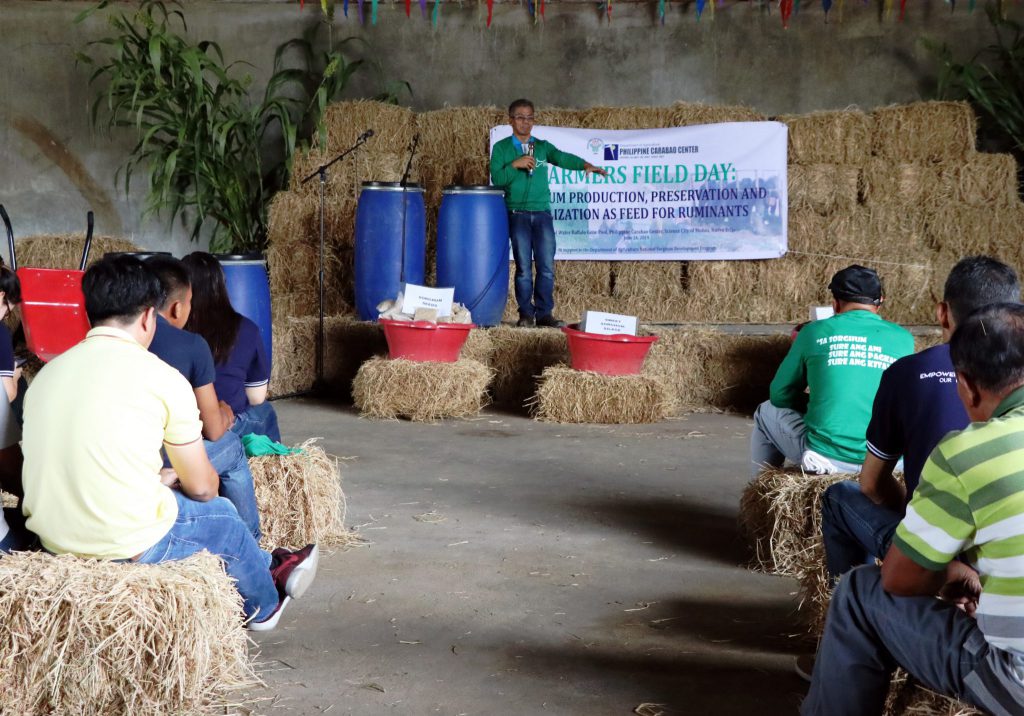More than 150 farmers and ruminant raisers in Luzon gained technical know-how on sweet sorghum production management and practices for sustainable supply of feedstuffs during a Farmer’s Field Day held last June 26.
The field day cum technology-transfer activity, held at the Philippine Carabao Center (PCC) National Headquarters and Gene Pool in Science City of Muñoz, Nueva Ecija, was in line with the National Sorghum Development Program (NSDP) launched by the Department of Agriculture (DA).
Dr. Candido Damo, technical consultant of DA’s National Corn Program, which also oversees programs in sorghum and cassava, explained the rationale of the NSDP during his talk in the field day. He said that the goal of the program is to respond to the global demand for sorghum as livestock and poultry feeds and substitute for domestically grown corn.
He added that, for 2019, the DA is targeting 100,000 hectares for the cultivation and production of sorghum, mostly in ancestral domain areas owned by indigenous people.
The sorghum planting is part of the DA’s Anti-Poverty and Greater Agricultural Productivity Program implemented through the Special Area for Agricultural Development (SAAD).
Dr. Damo also stated some good characteristics of sorghum by citing four “Fs” –i.e., it can be a reliable source of food, feed, fuel and fertilizer.
PCC Executive Director Dr. Arnel Del Barrio, on the other hand, talked about “Sorghum Production, Preservation and Utilization as Ruminant Feed”, which was the main topic for the field day.
“I dubbed this field day as ‘from seed to feed techno-transfer activity’. Everything started from a seed then after the next days, months, and years it will grow and become an additional source of feed or forage for our animals,” he said.
He also encouraged the participants to plant sweet sorghum by explaining the field day’s slogan: “Sa Sorghum, Sure ang Ani, Sure ang Pagkain, Sure ang Kita”. He said that farmers can surely harvest 70 tons of sorghum per hectare and earn income for its low production cost per kilo. If fed to buffaloes, milk yield will increase because of sorghum’s feed value.
Studies showed that sorghum is a drought-tolerant, hardy, easy-to-propagate and protein-rich crop, which can be used as an alternative raw ingredient for animal feeds. It could grow well in marginal areas requiring less water and rainfall. It can be harvested at every 85 days in three ratoons, a practice of growing a crop from the stubble of previous crop without replanting thus making it cheaper to produce.
Dr. Del Barrio added that after harvesting, sorghum can be fed as chopped fresh forage, silage, ingredient in total mixed ration (TMR), and pelleted.
The field day comprised series of hands-on activities and actual demonstrations on several sorghum cultural management practices, which include planting, harvesting, chopping and ensiling, TMR preparation, and feeding. Meanwhile, the step-by-step procedures on sorghum production and its good characteristics were also presented in a video material produced by PCC’s Knowledge Management Division.
Leoncio Callo, one of the farmer-participants, narrated some of the pointers he learned from the field day particularly about the different cultural management practices on sorghum production, processing and utilization.
“I believe that PCC really changes lives and we should all be grateful. PCC teaches us the proper cultural management starting from land preparation down to the harvesting for us to learn how we could improve further our feeding management to achieve a year-round supply of feeds for our buffaloes to earn more income,” he shared.
The field day was organized by the PCC’s Production Systems and Nutrition Section.
After the activity, the participants were provided with starter pack of sorghum seeds and production guide in planting sorghum for them to be able to start planting in their respective areas.

